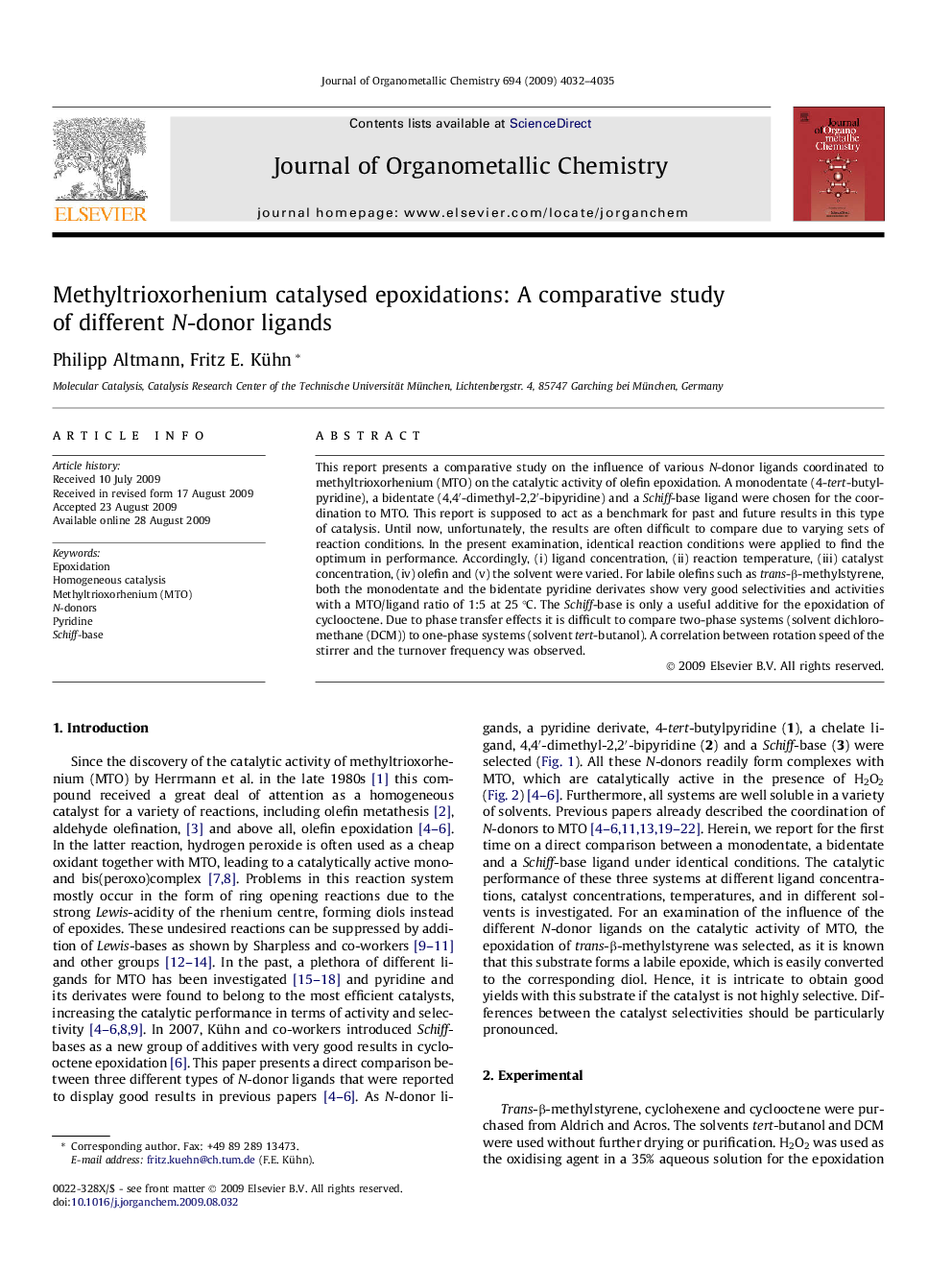| Article ID | Journal | Published Year | Pages | File Type |
|---|---|---|---|---|
| 1324365 | Journal of Organometallic Chemistry | 2009 | 4 Pages |
This report presents a comparative study on the influence of various N-donor ligands coordinated to methyltrioxorhenium (MTO) on the catalytic activity of olefin epoxidation. A monodentate (4-tert-butylpyridine), a bidentate (4,4′-dimethyl-2,2′-bipyridine) and a Schiff-base ligand were chosen for the coordination to MTO. This report is supposed to act as a benchmark for past and future results in this type of catalysis. Until now, unfortunately, the results are often difficult to compare due to varying sets of reaction conditions. In the present examination, identical reaction conditions were applied to find the optimum in performance. Accordingly, (i) ligand concentration, (ii) reaction temperature, (iii) catalyst concentration, (iv) olefin and (v) the solvent were varied. For labile olefins such as trans-β-methylstyrene, both the monodentate and the bidentate pyridine derivates show very good selectivities and activities with a MTO/ligand ratio of 1:5 at 25 °C. The Schiff-base is only a useful additive for the epoxidation of cyclooctene. Due to phase transfer effects it is difficult to compare two-phase systems (solvent dichloromethane (DCM)) to one-phase systems (solvent tert-butanol). A correlation between rotation speed of the stirrer and the turnover frequency was observed.
Graphical abstractThe effect of different Lewis-base adducts (pyridine derivatives, Schiff-bases) of methyltrioxorhenium (MTO) on the efficiency as catalysts of the epoxidation of trans-β-methylstyrene and cis-cyclooctene was studied. Further, the catalysis conditions were optimised by varying (a) the catalyst and Lewis-base concentration, (b) the reaction temperature and (c) the solvent.Figure optionsDownload full-size imageDownload as PowerPoint slide
